BEST PRACTICE 1
HOLISTIC DEVELOPMENT OF ADOPTED VILLAGES
The college has adopted five villages, Garh Kamalpur, Rangibasan, Jagannathpur, Ektarpur, and Purba Srirampur, to promote financial literacy, environmental awareness, menstrual hygiene, sustainable living, and ecological entrepreneurship amongst their residents. It tests soil and water of the villages and takes measures in controlling the spread of COVID-19 in the area.
Context
Absence of financial knowledge, led the villagers into fraudulent investment methods. Ignorance about menstrual health led to heath issues. Absence of environmental awareness resulted in stubble burning and use of plastic below 120 microns. They could not identify safe drinking water sources and lacked knowledge about generating compost. Moreover, they were ignorant of possible entrepreneurial options using local ecology that could potentially sustain their livelihood.
Objectives
- To promote financial literacy, environmental awareness, menstrual hygiene, and sustainable living among the villagers.
- To identify safe drinking water sources, test soils of their agricultural lands, and teach them preparation of compost pit.
- To promote entrepreneurship based on local ecology, thereby, providing alternative livelihood.
- To control spread of Covid-19 in the villages.
Practice
- Volunteers from college teach villagers safe investment options to save them from losing money in chit-funds.

- Villagers are taught ill effects of burning stubble openly, use of plastics under 120 micron, open defecation, and benefits of converting biodegradable waste into compost.
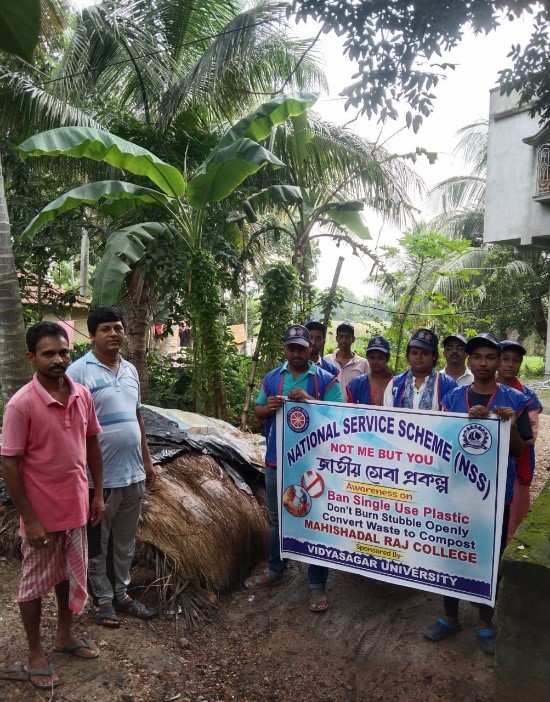
- Women are familiarized with menstrual hygiene and different menstrual products.
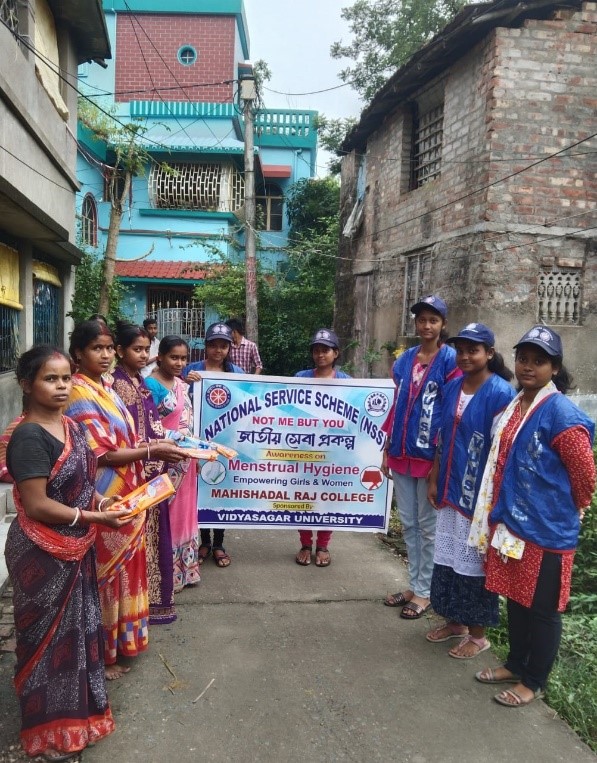
- Masks and sanitizers were distributed during pandemic.
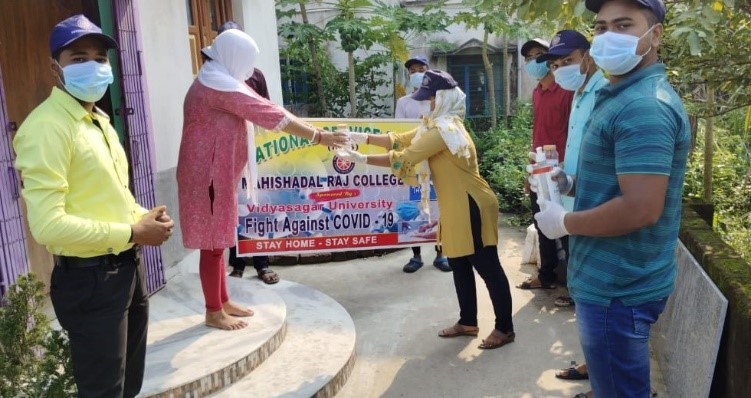

- Different water sources are tested to indicate safe sources of drinking water.
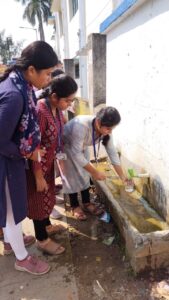
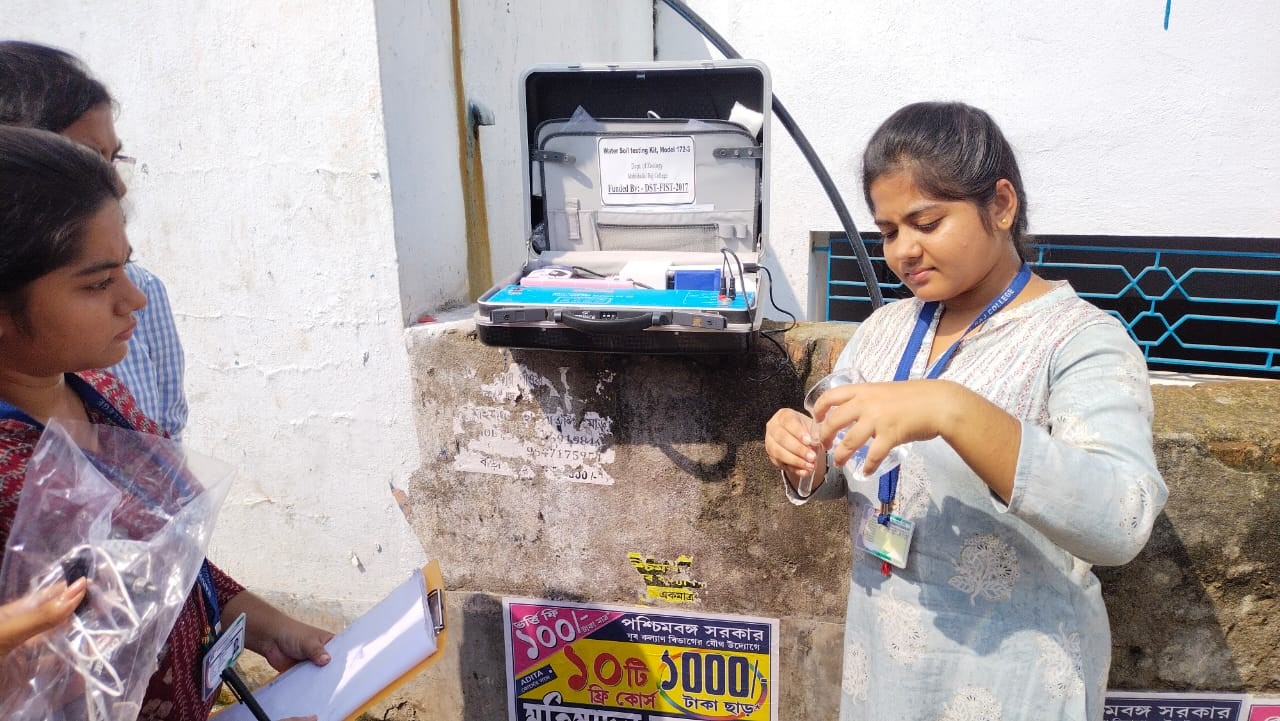
- To promote ecological entrepreneurship, the college, in association with WWF, manufactures herbal aabir(coloured powder) from natural sources and inspires the villagers to sell them in market.
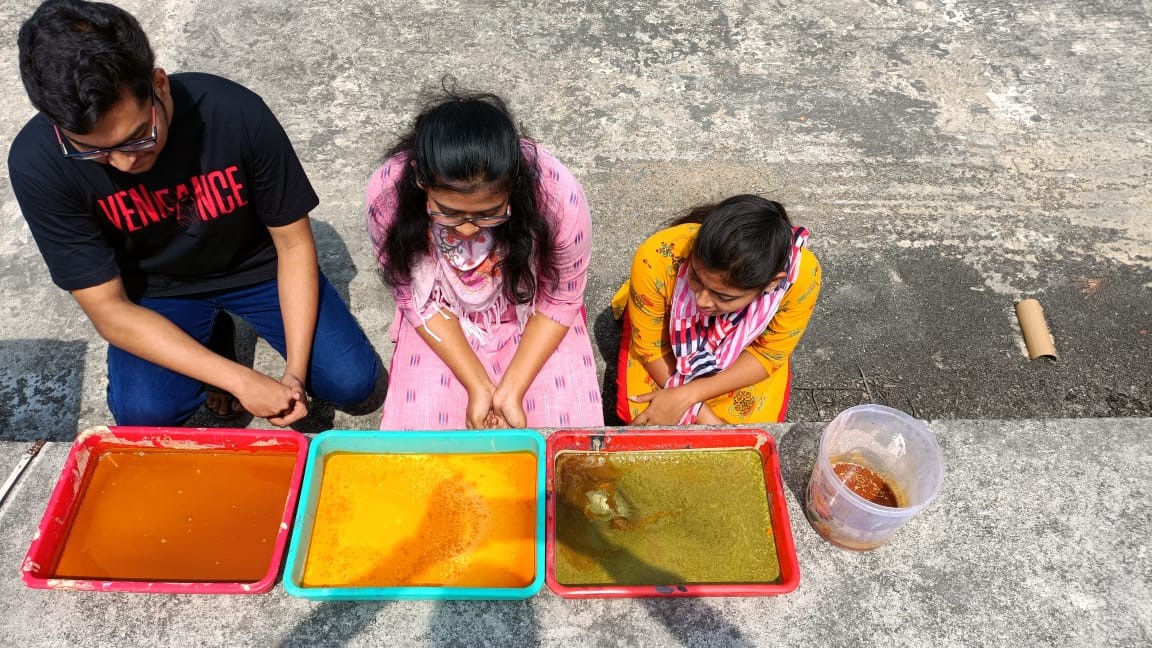
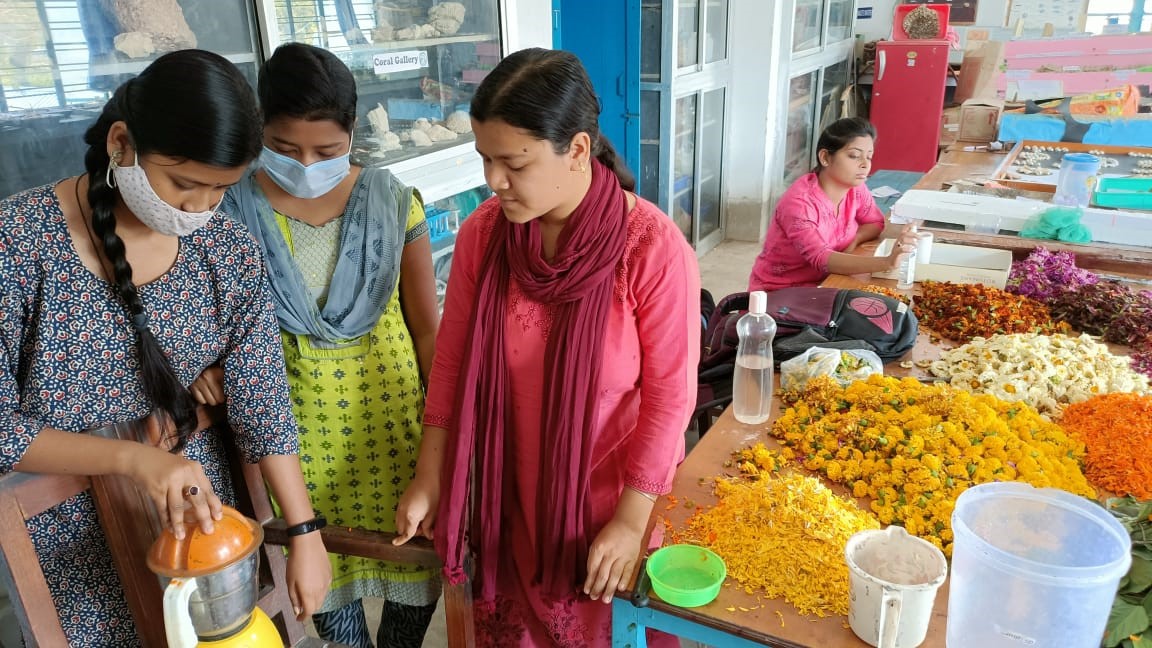
- The college hatches and nurtures ornamental fishes which the villagers sell in market.
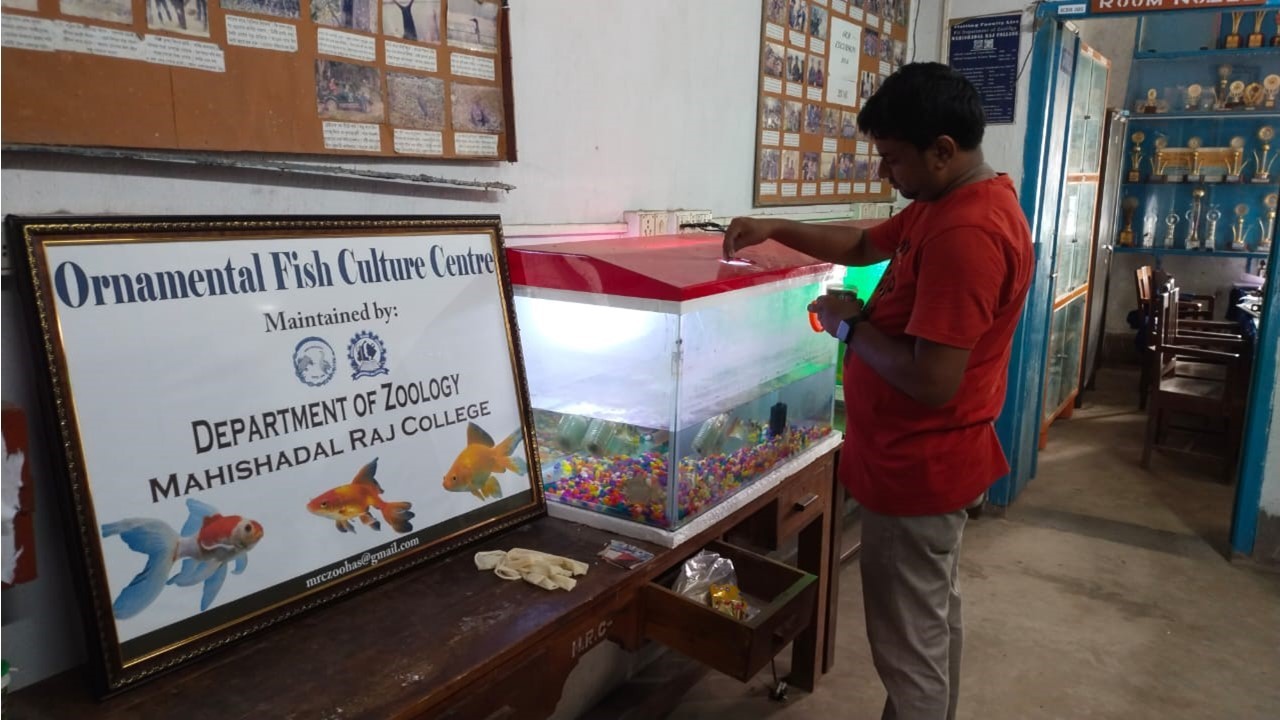
- Department of Zoology has successfully extracted chitin and chitosan from shrimp waste. Chitin, a biopolymer, has wide applications in food and biomedical industries, and production of chitin from exo-skeletal wastes of shrimps can considerably reduce the state’s dependence on imported chitin.

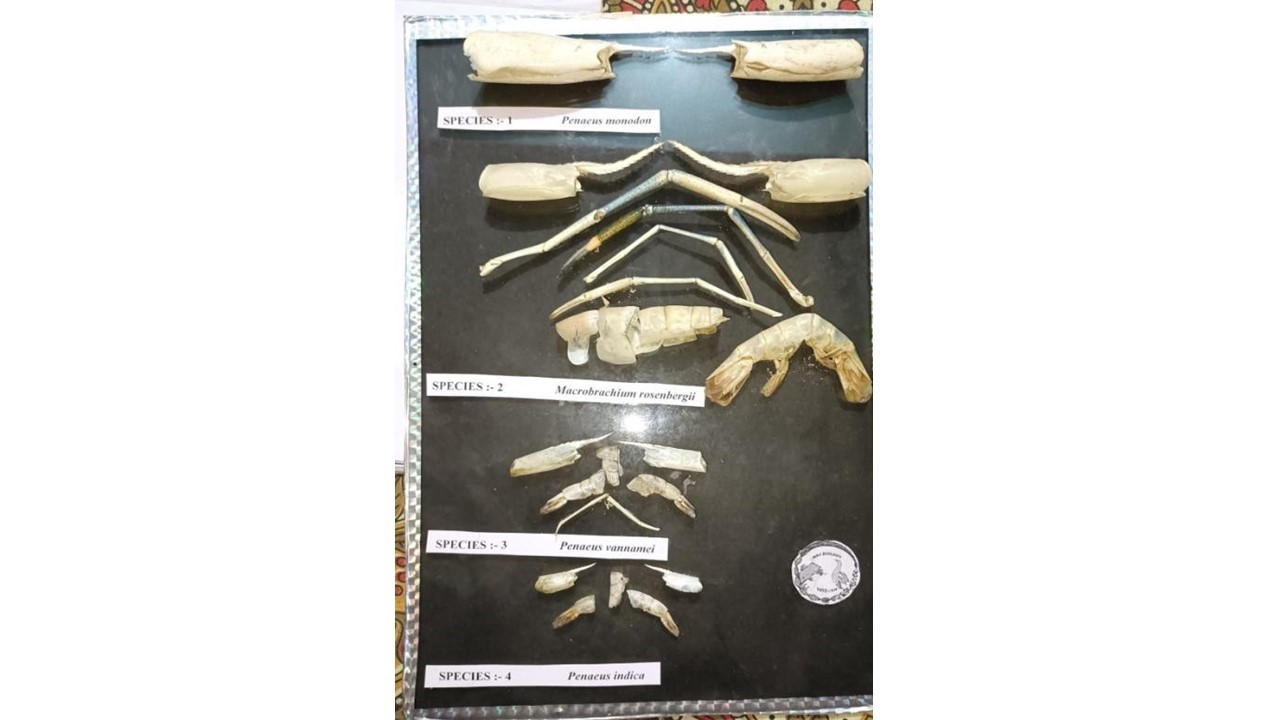

Evidence of Success:
- Villagers have started depositing money in banks. Villages are open defecation free; stubble burning and single-use plastic has reduced considerably; compost pits have been created where vermicomposting is being practiced.
- Covid-19 was checked in the villages.
- Safe sources of drinking water have been identified and other water sources are not used for drinking purposes.
- The villagers have made profits from selling herbal aabir and ornamental fishes.
Problems Encountered and Resources Required:
- It was a challenge to convince the villagers that banks are safe saving and investment options. They were imparted lessons of basic finances to combat this challenge.
- It was difficult teaching them the importance of conservation of environment. With persistent efforts, they were acquainted with the repercussions of environmental degradation for them and their future generations.
- It was difficult to single out individuals with business acumen and interest in ecology. Regular interactions helped to classify individuals who successfully sold ecologically sustainable products manufactured by the college to supplement their income.
BEST PRACTICE 2
ECO-CENTRIC LEARNING AND LIVING
The college promotes and practices eco-centric learning and living. The departments of Biological Sciences, especially the Department of Zoology, are pioneers in this arena. The college has adopted numerous innovative methods to protect environment and inspire the students to further undertake measures to preserve and enrich the environment.
Context
The ruthless destruction of environment in the name of progress and development has necessitated a different approach of living which is sustainable and promotes preservation of the environment. Constant exploitation of nature will make the world inhabitable for the future generations. Mahishadal Raj College undertakes eco-centric teaching-learning to preserve local environment and inspire the students to adopt eco-centric living as well.
Objectives
- To identify and classify local indigenous plants and maintain a dossier of their values and uses.
- To protect local faunal species from unwanted killings.
- To preserve, nurture, and promote local floral and faunal species in their natural ecosystem as far as possible.
- To impart hands-on practical education to the students about their natural habitat and to sensitize them about environment.
Practice
- The Dolphin Research Centre of the Zoology department works towards studying and protecting the dolphins. The department has also conducted workshops with fishermen of the area to teach them the benefits of appropriate nets that catch big fishes but lets the small fishes escape, thereby helping them grows and reach reproductive age.
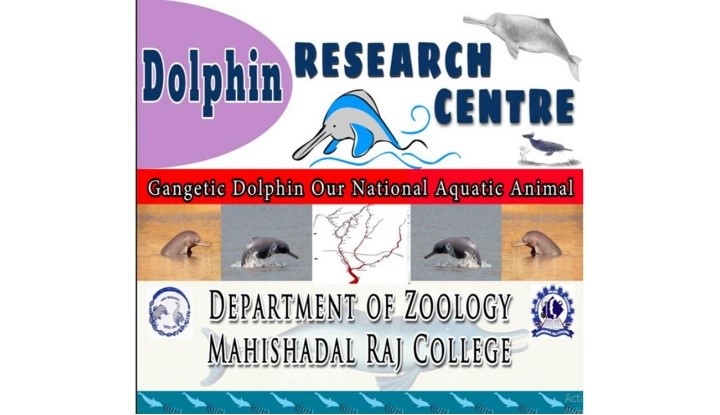
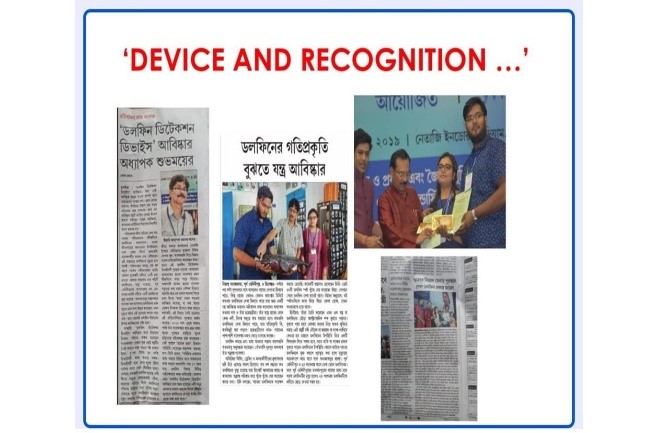

- A Global Warming Reduction Centre has been set up in 2021. A government project, it conducts seminars, conferences, and hands-on workshops in nearby schools and colleges to spread awareness about global warming and methods to combat it.
- The pond in the second campus is used to conserve indigenous fish populations of the area. Named “Abhay-pukur”, this natural eco-system is maintained for the fish population to breed naturally as far as possible.
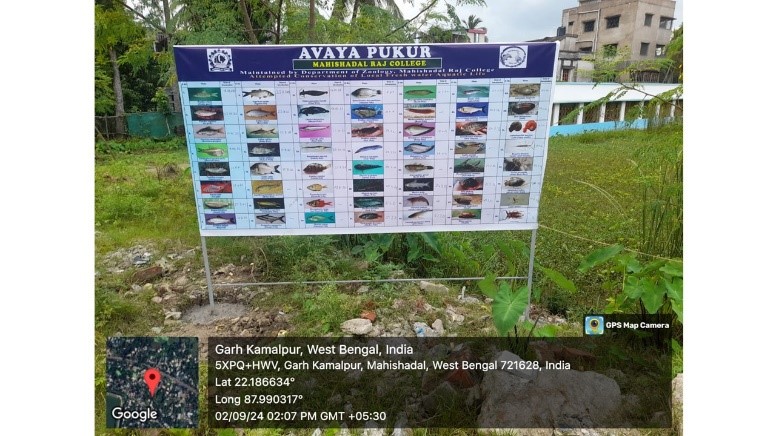
- A Miyawaki Forest has been adopted at Mahishadal Rajbari Campus, established by Haldia Development Authority (HDA).
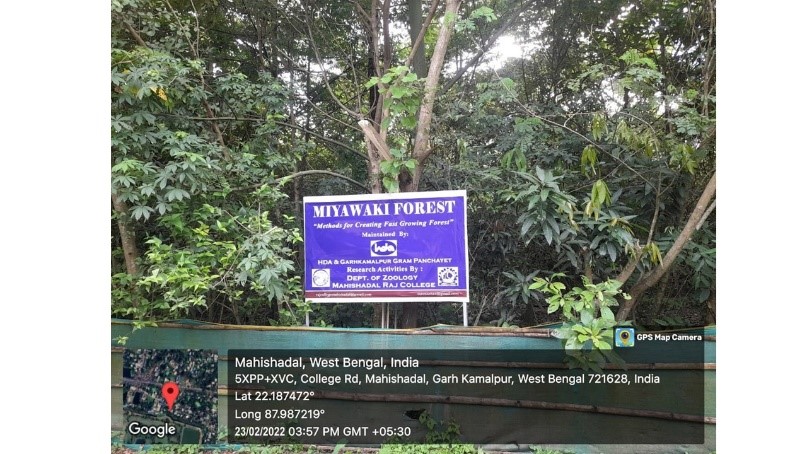
- There is a pollination research centre which studies the pollination method of a large number of wild weed plant species simultaneously enhances bio-diversity resource.
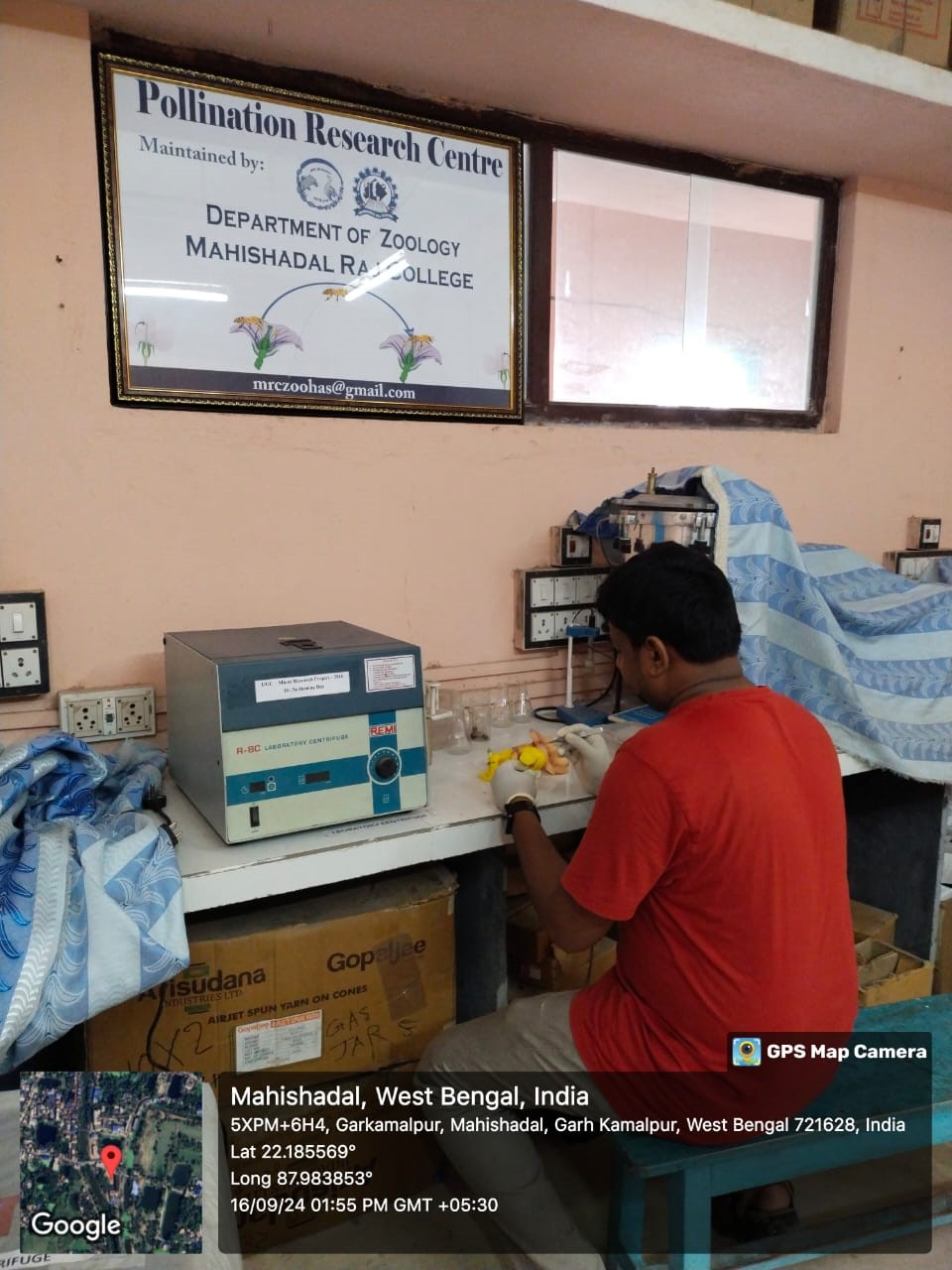
- The Department of Zoology also maintains a butterfly garden that helps students learn about butterflies. To maintain the butterfly species, approximately 32 different plant species are also nurtured.
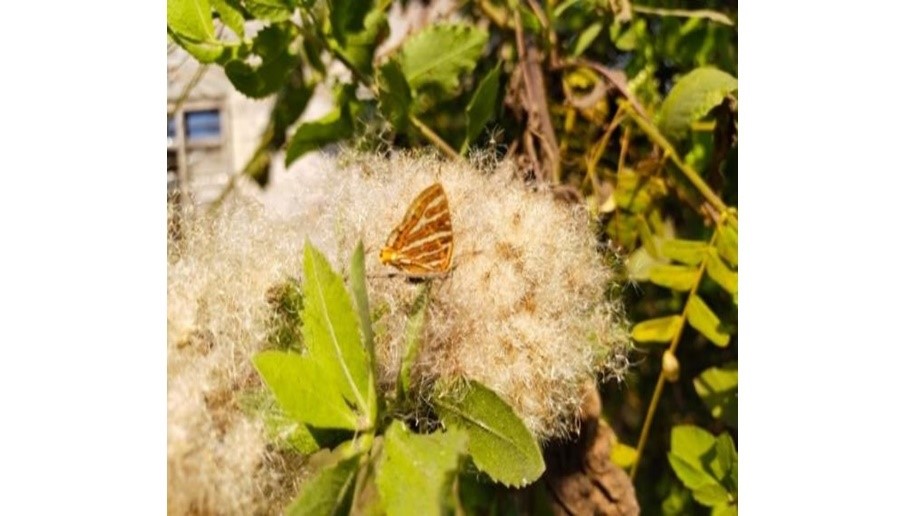
- The college uses aquatic macrophytes post precipitation of hazardous chemicals as an ecological alternative for removal of PPCPs and other effluent wastes from laboratories.
- Relic forests comprise very original and unique cultural vegetation corresponding to the indigenous culture. This study examines the traditional values as a determinant that allows even fragmented relic forests to survive, and tries to consider the preservation of the surviving forests. As research materials at Mahishadal block, five relic forests, which are typical and representative of such forests in terms of their size or structure, were selected. Through a survey of the historical records of each relic forest, an eco-sociological reinterpretation of the origins of the forests was carried out.
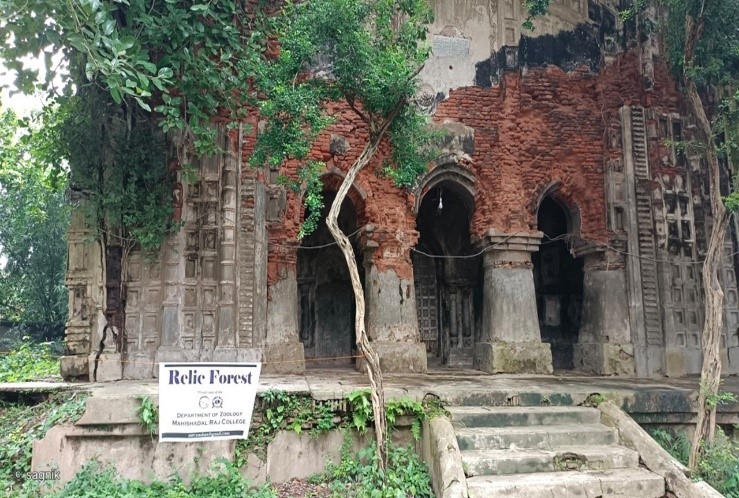
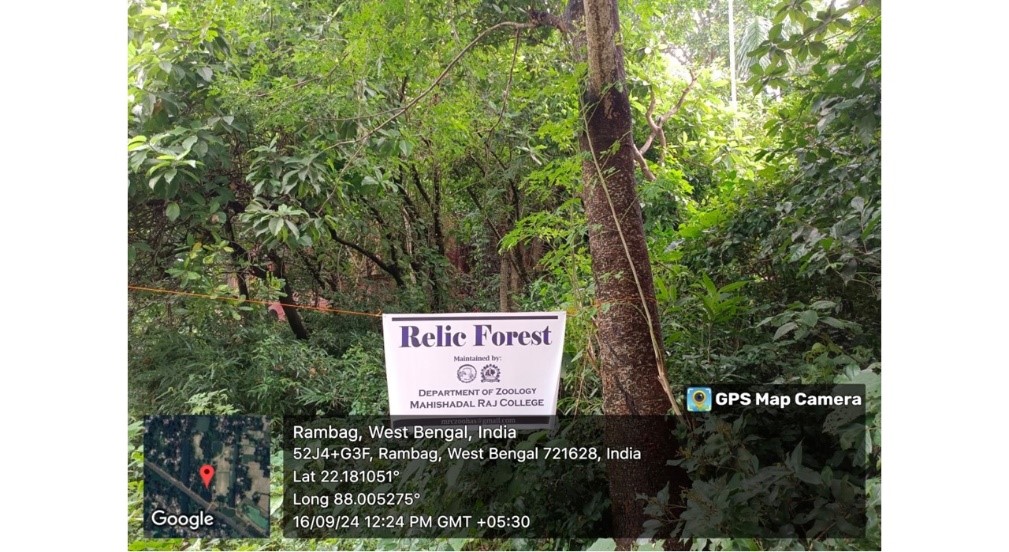
Evidence of Success
- An in-situ conservation project that began with eleven species of fish, “Abhay-pukur” now houses 37 species.
- Indigenous plants are preserved in the Miyawaki forest and a canopy has been developed.
- There are nine different species of butterfly at present in the butterfly garden.
- Hazardous chemicals from laboratory wastewater have been significantly eliminated.
Problems Encountered and Resources Required
- The college faces space constraint for carrying out projects like the butterfly garden, animal rescue center, pollination center etc.
- The Dolphin Research Center falls under Schedule I and obtaining necessary permissions from the Chief Conservator Wildlife of the Wildlife Department is difficult and time-consuming.
- Resources required include fund, instruments and manpower.

